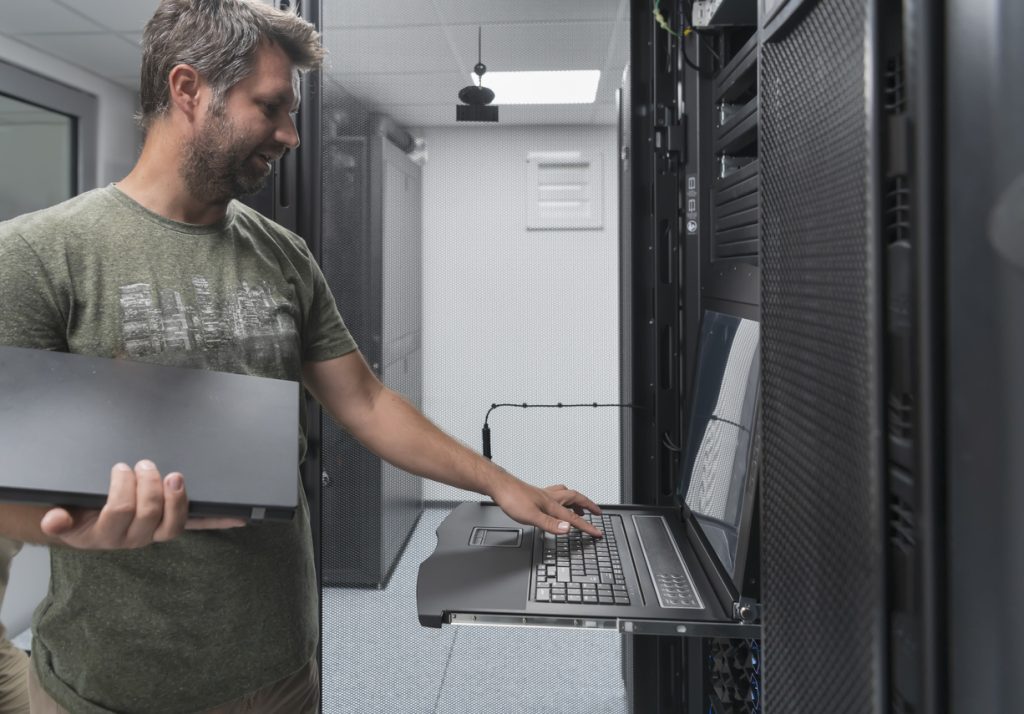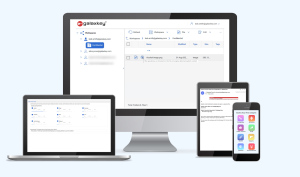
The need for transfer large files safely and securely has never been greater. Businesses routinely exchange sensitive information, making data security a top priority. In this blog, we’ll look at the risks associated with large file transfers and explore the safest way to accomplish them.
Understanding the Risks of Large File Transfers
Large file transfers can be fraught with risks, with many associated potential pitfalls and hazards:
Data Breaches and Security Concerns
Large files often house sensitive, confidential information that makes them a prime target for hackers and malicious actors. Without robust security measures in place, these files can be intercepted or accessed by unauthorized parties, leading to data breaches and potential harm to your organization. Protecting your data during transfer is, therefore vital to prevent such breaches.
Data Loss and Corruption
Transferring large files over long distances or unreliable networks can be a recipe for data loss and corruption. As files traverse the digital landscape, they may become fragmented or corrupted, resulting in errors or, in severe cases, complete data loss. This can be catastrophic for businesses or individuals who rely on the integrity of their files for critical operations.
Legal and Compliance Issues
In today’s regulatory landscape, failing to secure sensitive data during transfer can result in serious legal and compliance issues. Organizations handling customer data, financial information, or intellectual property must adhere to stringent data protection laws. Neglecting secure file transfers not only exposes your data but can also lead to legal repercussions, fines, and damage to your reputation.
Slow and Unreliable Transfers
Traditional methods of transferring large files often suffer from slow speeds and unreliability. Whether you’re relying on email attachments, FTP, or physical USB drives, these methods can be time-consuming and prone to failure, especially when dealing with massive files. The frustration of interrupted transfers and delays can impact productivity and business operations.
Limitations and Risks of Traditional Methods
When it comes to transferring large files, relying on traditional methods can pose significant limitations and security risks. Three common methods are:
- Email Attachments
- FTP (File Transfer Protocol)
- USB Drives
Email Attachments
Security Concerns: Email attachments are a convenient way to share files, but they come with inherent security concerns. Email communications are not encrypted by default, which means that large file attachments are vulnerable to interception during transit. This makes them an attractive target for cybercriminals looking to access sensitive data.
File Size Limitations: Most email providers impose file size limits on attachments. This limitation can be frustrating when dealing with large files, as you may need to compress or split them into smaller parts, increasing the complexity of the transfer process.
Data Retention Policies: Many organizations have email data retention policies in place, which could result in the deletion of older emails and their attachments. This poses a risk of data loss if files are not properly archived elsewhere.
FTP (File Transfer Protocol)
Inherent Insecurity: FTP is a legacy protocol that lacks inherent security features. When you use FTP for file transfers, the data is transmitted in plain text, making it susceptible to eavesdropping and interception by unauthorized parties. This poses a significant risk to the confidentiality and integrity of your data.
Complex Setup: FTP setups can be complex and require technical expertise to configure securely. Mistakes in server configuration can lead to data breaches or unintentional exposure of files.
No Encryption: FTP does not provide encryption by default. To secure FTP transfers, organizations often need to implement additional encryption layers, adding complexity and potential vulnerabilities.
USB Drives
Physical Vulnerability: USB drives are convenient for offline file transfers, but they are also physically vulnerable. If a USB drive is lost or stolen, the data it contains can be accessed by anyone who finds it, potentially leading to data breaches.
Data Corruption: USB drives can be prone to data corruption, especially if they are not safely ejected after use. This can result in file errors and data loss during transfers.
Lack of Access Control: Once a file is on a USB drive, it can be challenging to control access to that file. There’s no easy way to revoke access or track who has copied the data.
As you can see, traditional methods of transferring files may be convenient, but they lack the security and efficiency. That’s why we urge you to explore modern secure solutions like Galaxkey Secure Workspace. It offers robust encryption, access control, and secure sharing features to ensure the safety of your data during transfer.
Galaxkey Secure Workspace
Galaxkey Secure Workspace is a state-of-the-art secure file transfer and collaboration platform designed to keep your data safe.
It has some great features and benefits, including:
- End-to-End Encryption, in transit and at rest
- Access Control
- Secure File Sharing
- Audit Trails
WFEL – A Real Life Success Story of Secure Large File Transfers with Galaxkey
Defence engineering experts WFEL, known for their century-long legacy in aviation and military bridge manufacturing, use Galaxkey Secure Workspace. They needed a secure way to exchange sensitive data with suppliers, especially while collaborating on top-secret projects.
Committed to complying with the Official Secrets Act, WFEL turned to Galaxkey Secure Email and Workspace solutions. These tools offered military-grade data protection, ensuring emails and attachments remained secure even after being shared and stored elsewhere by suppliers. Not only did this streamline processes and reduce administrative burdens, but it also enhanced collaboration with suppliers by simplifying file tracking and minimizing email chains.
Where Secure File Transfer is Crucial
Secure file transfer isn’t just a convenience; it’s an absolute necessity, particularly in scenarios where sensitive data is at stake.
1. Legal Documents
In the legal sector, secure file transfer is vital. Law firms routinely exchange confidential client information, contracts, and court documents. Mishandling such data can lead to severe breaches of attorney-client privilege, legal malpractice claims, and jeopardize the outcome of legal proceedings. Secure file transfer ensures that sensitive legal materials remain confidential and protected from unauthorized access.
2. Healthcare Records
The healthcare industry relies heavily on secure file transfer to safeguard patients’ sensitive medical records and personal information. Electronic Health Records (EHRs) contain a wealth of data, including diagnoses, treatment plans, and billing details. Complying with regulations like the Health Insurance Portability and Accountability Act (HIPAA) is not optional but mandatory. Secure file transfer ensures healthcare providers can share patient information securely, protecting both patient privacy and legal compliance.
3. Sensitive Corporate Data
Within the corporate world, sensitive data abounds, from intellectual property and financial reports to proprietary algorithms and product designs. In industries such as technology, pharmaceuticals, and finance, secure file transfer is the linchpin of protecting trade secrets and competitive advantages. Leaks or breaches in these areas can result in significant financial losses and damage to a company’s reputation. Secure file transfer solutions guarantee that sensitive corporate data remains confidential and intact.
4. Government and Defense Contracts
Government and defense contracts involve vast amounts of classified information and critical national security data. Secure file transfer is not only essential but often a legal requirement in these contexts. Breaches can have dire consequences, jeopardizing national security, international relations, and defense operations.
5. Research and Development
In research and development (R&D), organizations invest heavily in innovation. Secure file transfer safeguards the results of R&D efforts, preventing competitors and cybercriminals from accessing proprietary research, experimental data, and breakthrough discoveries.
As you can see, the consequences of insecure file transfers can range from legal liabilities and financial losses to damage to reputation and even threats to national security. As such, it is clear that secure file transfer solutions, like Galaxkey Secure Workspace, are not merely an option but an essential tool for ensuring data privacy, compliance, and peace of mind in today’s interconnected and data-driven world.
In an increasingly digital world, safeguarding your data during large file transfers is non-negotiable.
Ready to experience the peace of mind that comes with Galaxkey’s cutting-edge solutions? We invite you to get in touch with us today and arrange a demo. Discover firsthand how Galaxkey Secure Workspace can revolutionize your file transfer processes, ensuring your data remains secure, your compliance needs are met, and your productivity soars.
Don’t compromise on the safety of your data—take the first step toward secure, efficient file transfers. Contact us now to schedule your demo and fortify your data’s defenses with Galaxkey Secure Workspace. Your data’s security begins here.


